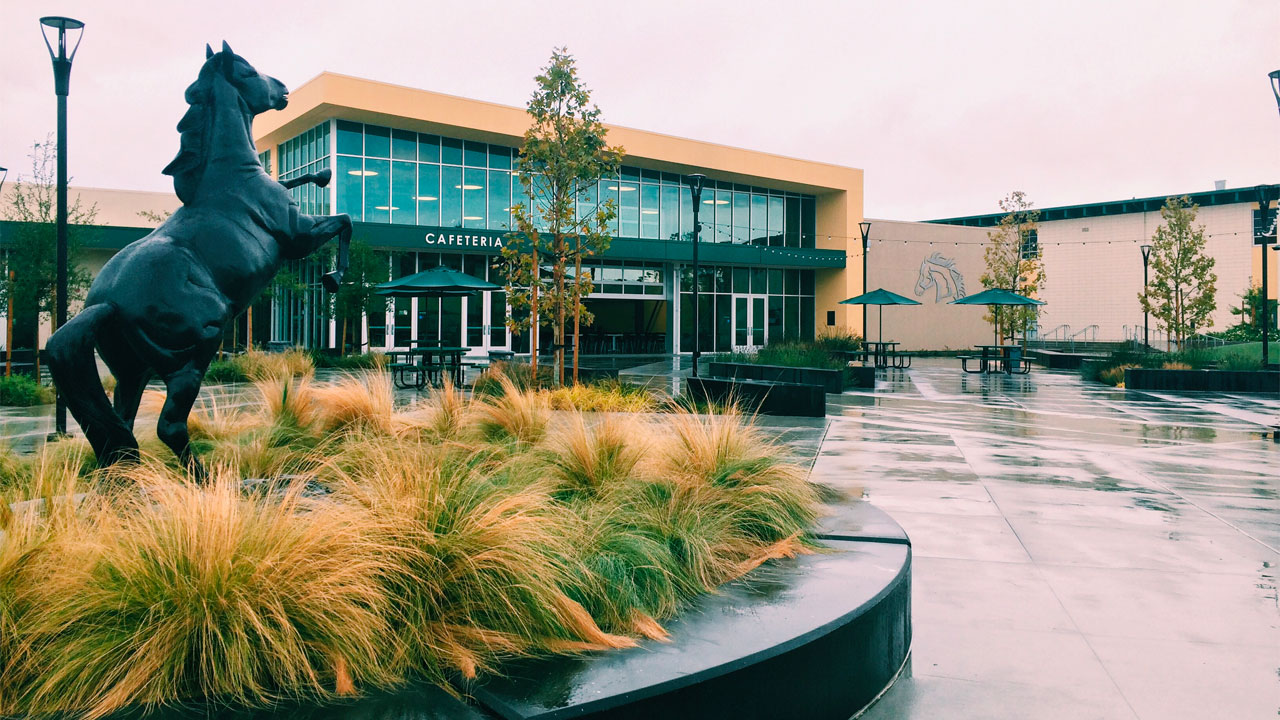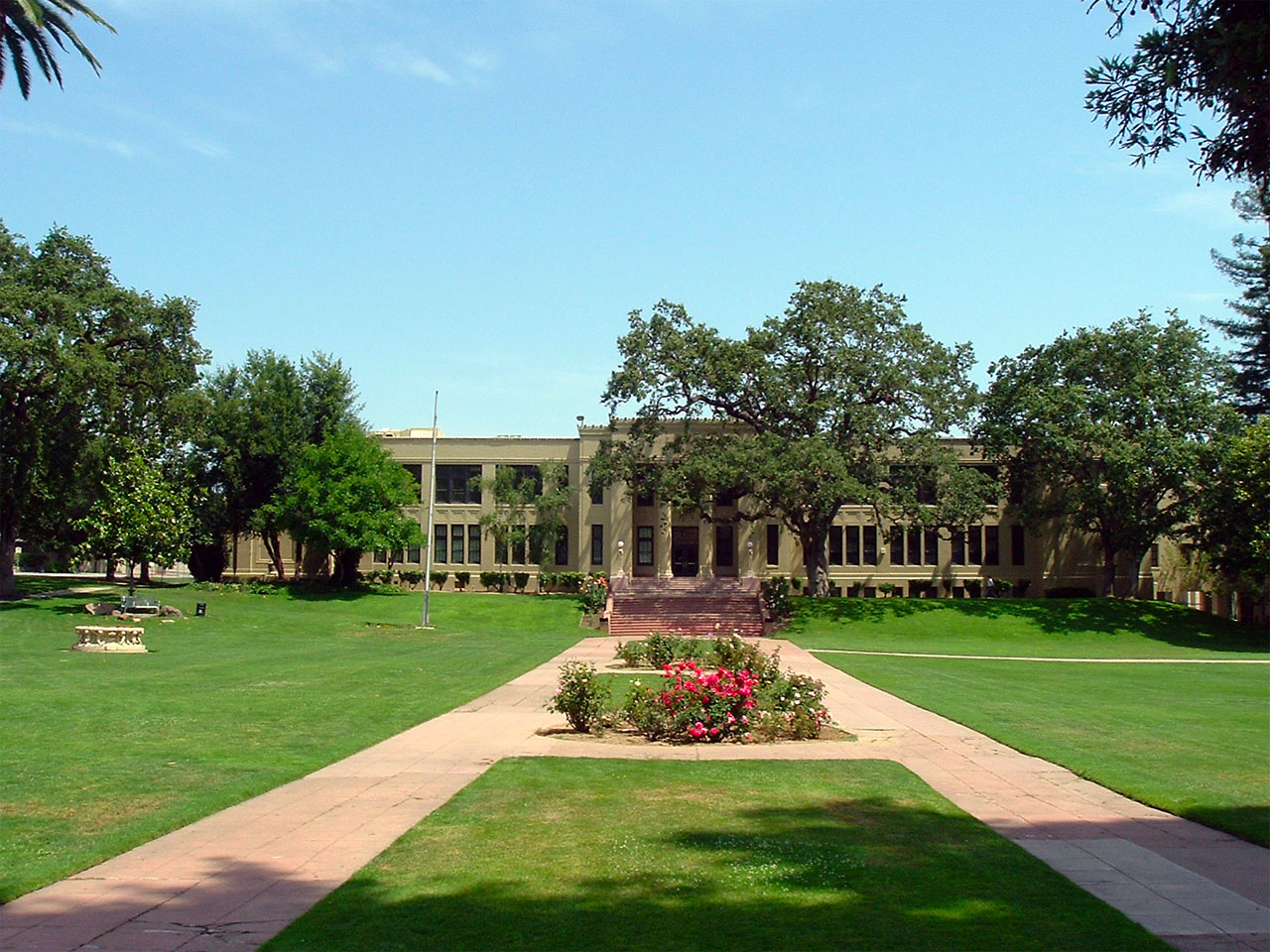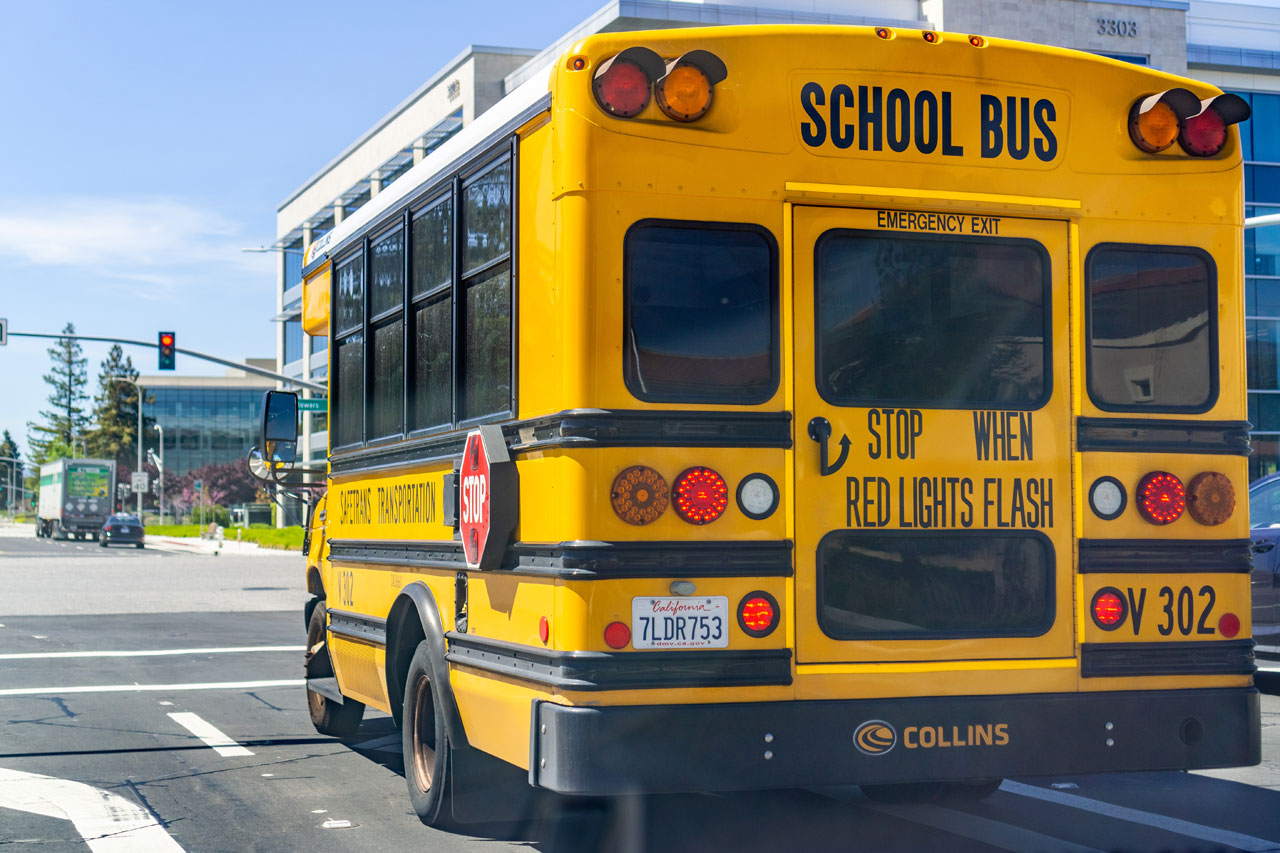A child’s ZIP code can dictate educational resources, student performance, and the chance of obtaining a higher degree.
Because property taxes fund local school districts, resources for students vary greatly from neighborhood to neighborhood. Uladzik Kryhin Shutterstock
In affluent northern Santa Clara County, a high school is constructing a new gym with full basketball and volleyball courts—one of a few renovation projects in the works. In East San Jose schools, custodians, service technicians and various support staff have been laid off due to budget cuts.
Santa Clara County, a diverse region in the heart of the ever-booming Silicon Valley, is the perfect ecosystem for high-tech corporations and ambitious startups to thrive. But those outside of the technology industry and their school-aged children can fall through the cracks.

“Depending upon the ZIP code your child is born into, the state decides they’re either worth this amount or that amount,” says Lisa Andrew, the CEO of the nonprofit Silicon Valley Education Foundation. “In Santa Clara County, it can be as much as a $10,000 difference in per-student spending.”
Imbalances across public education in California are due to the state’s reliance on property taxes, which vary greatly from neighborhood to neighborhood.
“School districts with less money have lower staff salaries, less money for teacher professional learning, less money for student support services, and less money to provide quality education,” Andrew says. “Students in these districts do not have access to educational opportunities that lead to economic mobility in Santa Clara County.”
On average, California public K-12 schools receive most of their funding from the state and some from the federal government, with local revenue through property taxes making up about 30 percent of the revenue, according to the most recent report from the Public Policy Institute of California (PPIC).
In a wealthy district such as Fremont Union High School District, which serves a large number of students in Silicon Valley, local taxes make up the majority of yearly revenue. During the 2019-2020 school year, the district collected $19,202 in local taxes and $3,581 from the state per student, according to the National Center for Education Statistics.
East Side Union High School District (ESUSD), which serves the diverse East San Jose student population, received $11,456 from local taxes and $7,843 from the state per student during the same year.
Despite receiving more funding from the state, ESUSD collected less revenue than nearby schools in wealthier areas.
Disadvantaged Districts Are Left Behind
According to the California Department of Education’s most recent list of lowest-performing schools, 23 in the South Bay were determined to be in need of extra support. Nine schools in East San Jose—four from Alum Rock Union Elementary School District and five from ESUSD—made the list.
“When you have more money, you can have a robotics club, you can have a wet lab,” Andrew says. “When you have limited resources, those things are considered extras. How can those be considered extras if we’re preparing students to be the workforce of Silicon Valley?”
In Silicon Valley, a global innovation hub, property taxes are astronomical thanks to high-earning professionals buying homes.

While parts of the region experienced massive growth in wealth, diverse and lower-income neighborhoods faltered. Disparities became most visible in public programs such as K-12 schools.
Disparities in education “are so prominent in the Bay Area because you’ve got districts right next to each other that have very different amounts of funding,” said Stanford Graduate School of Education Professor Deborah Stipek. “Some districts have to decide whether they want to have smaller class sizes or a music program.”
Of the 944 school districts across California, about 80 are classified as “basic aid districts.” This term makes it sound as if they have limited resources, but it’s actually the opposite. Every district receives the same constitutionally required minimum funding from the state. In a basic aid district, local property taxes exceed that funding limit—and the excess is retained by the district. More than 40% of these districts are located in the Bay Area, according to the PPIC.
Additionally, some affluent neighborhoods in Silicon Valley have parent foundations that raise funds for their children’s schools. These efforts can add as much as $2,000 per student in funding, Stipek says.
School districts that bring in more revenue can afford to offer teachers and staff better salaries that keep turnover low. The Bay Area’s high cost of living makes this especially important for workers.
“Disadvantaged districts have fewer teachers applying, and veteran teachers transferring to higher-paying districts,” Andrew says. “We’re all human beings here—teachers will go to work where they’ll make more money to live and buy a house here in Santa Clara County.”
Teachers who stay at a job site long-term develop cumulative skills that help them better serve students and the local community, she adds.
In lower-income neighborhoods, where parents don’t have the resources to donate large dollar amounts, nonprofits step in to help close the gap.
“We’re the foundation that gives extra funds to under-resourced districts because their parents are working three jobs just to buy milk,” Andrew explains.
How Did We Get Here?
Since at least the 1960s there has been an outcry about the inequality caused by the fact that public schools in California have historically been funded through local property taxes.
The Serrano v. Priest case in the 1970s brought widespread awareness to the issue. The California Supreme Court ruled that the dependence on local property taxes led to large disparities in school revenue, violating the equal protection clause of the 14th Amendment.

“This funding scheme invidiously discriminates against the poor because it makes the quality of a child’s education a function of the wealth of his parents and neighbors,” associate judge Raymond L. Sullivan wrote in the decision.
As a result, California began making efforts to equalize funding between districts by setting revenue limits.
But Proposition 13, passed in 1978, slowed progress.
The new law made it so that the maximum tax on all property did not exceed 1% of its cash value—based on the property’s worth in 1976—and restricted yearly increases to no more than 2% per year only if the property was sold or reconstructed. Under Prop 13, similar properties across the region received vastly different assessed values.
“Before Prop 13, California was considered one of the best states (for public education),” Stipek said. “People who grew up in California will talk about how they had band, music and art classes. In a lot of schools that has disappeared.”
In an effort to provide more equitable funding, California unveiled its 2013 Local Control Funding Formula. The new system provides additional funds to school districts with high populations of low-income students, English language learners and foster children.
“It went a long way toward not just equalizing, but recognizing that some kids require more resources to learn,” Stipek said. “We are one of the few states that compensate, to some degree, for the challenges that poverty creates in our efforts to support children’s education.”
The formula mandates that each student receive about $7,500 in basic funding, according to PPIC. School districts get an additional 20 percent for each disadvantaged student enrolled, and they receive more aid if more than 55 percent of students are from underserved populations.
Though a step in the right direction, Andrew said, the supplemental funds are not enough to equalize funding across districts, especially when funding is based on geographical demographics.
Facing the Challenges Ahead
Despite reforms made to educational funding in recent years, school districts have many more fiscal challenges ahead of them, according to the PPIC.
K–12 student enrollment since the COVID-19 pandemic has been declining in California, and districts will have to handle downsizing through the next decade. Additionally, the rising cost of living and health and benefits for teachers and staff will also likely stretch funding thin in the coming years.
So what can we do to close these funding gaps?

“The biggest challenge is having the state recognize that this is an ethical issue,” Andrew. “If they want to change the trajectory of the economic mobility of these students, then something has to be changed legislatively. We all have educational research that tells us what best practices are. It’s just, they don’t have the money to do it.”
California’s local school districts have limited options to supplement revenue, including levying parcel taxes and voluntary contributions—none of which generate enough funds, according to an essay by education economist Susanna Loeb.
Plus, parcel taxes can only be enacted with the approval of two-thirds of voters. And many low-income residents are hesitant to add more taxes to their expenses.
Some states have enacted a local income tax to supplement school funding, but economists note that these taxes are even less stable than property tax revenues. Local sales taxes are used toward public education in other parts of the country, but revenue from this is far less consistent than other options.
According to Loeb, the success of California education reform will be in the details. What tax powers will districts have, how will revenue be equalized among schools, and what caps are being made to local revenue funding?
“In an ideal world, there’d be not just equal but equitable funding,” Andrew said. “First, you start off with equal funding per pupil and then more money should be given for pupils with socioeconomic disadvantages.”
Long form articles which explain how something works, or provide context or background information about a current issue or topic.